Consider Thanksgiving
What's hidden beneath that turkey? Also, a forgotten food treasure. And a vintage menu from a long ago holiday.
I met Ian Dengler in the late seventies and became obsessed with his research. He was convinced that you could learn a lot about a person simply by asking what they ate for Thanksgiving dinner. I persuaded my editors to let me write a piece about him: you can read it here.
I wasn’t the only one fascinated by Ian’s work: over the next few years I was asked to write many articles about him. Here’s one from 1985; at the time, Thanksgiving dinner pretty much meant turkey with all the trimmings (see the vintage menu below), and the notion that each ethnic group made the meal their own was rather shocking. Today, of course, every epicurean magazine is on the hunt for new ways to interpret our national meal.
Speaking of Thanksgiving… here’s a product I couldn’t do without at this time of year. Once ubiquitous across America, cider syrup is slowly making a comeback.
Apples have a long history in America; early settlers waded ashore in Jamestown carrying pots of apple saplings; by 1900 there were 17,000 varieties of apples growing in this country. John Chapman – a Swedenborgian missionary and entrepreneur known as Johnny Appleseed - devoted himself to spreading the apple gospel. But he wasn’t planting apples for pies and sauce; his apples were destined for the cider press.
For much of American history, hard cider was the most important beverage. Water was considered so unsafe that even children imbibed; some people drank beer, but most relied on cider.
Cider had other uses as well. Pilgrims rarely used cane sugar; their sweetener of choice was “apple molasses,” made by boiling cider until it turned into a deep, dark, rich syrup that was perfect for pies, cakes, baked beans, and classic desserts like Indian pudding and mincemeat.
Cider syrup became even more important during the Revolution. Sugar and molasses were imported from British plantations in the West Indies, which meant that patriotic Americans stuck with their home-brewed sweetener.
Then the Civil War came along and boosted apple Cider syrup even more; no serious Northerner wanted to use cane sugar because it was a product of the slave system. Cider syrup continued to be an American staple until Prohibition when sober citizens gleefully burned down every cider apple tree they could get their hands on.
That is definitely our loss. Cider syrup, in my opinion, is far more appealing than molasses, agave syrup or maple syrup. Put a drop on your tongue and you taste apple blossoms, honey, and citrus. Simultaneously sweet and tart, it has a slight caramel edge and just a touch of smoke. A drop makes vegetables sing, turns ordinary applesauce into something extraordinary, tastes great on pancakes and gives the dullest ham real character.
My favorite is Carr’s. Here in the Hudson Valley you can find it in many local stores, but it is also easy to order online.
Roasted Butternut Squash with Apple Cider Syrup
Cut the squash in half, which is the hardest part of this entire recipe. Remove the seeds, put it in a roasting pan, cut side down, with a little bit of water and roast at 400 degrees for about 45 minutes. Let it cool, then squish it out of the skin and mash.
Add 2 or 3 tablespoons of butter, salt and pepper to taste and allow the butter to melt. Splash in some of the syrup; I use a couple of tablespoons, but you might want more.
At the very end, I like to stir in some pomegranate seeds, which adds both color and crunch.
Serves 4-6.
Thanksgiving at The Hollywood Roosevelt Hotel in the fifties. Note the drink - and the price of dinner.




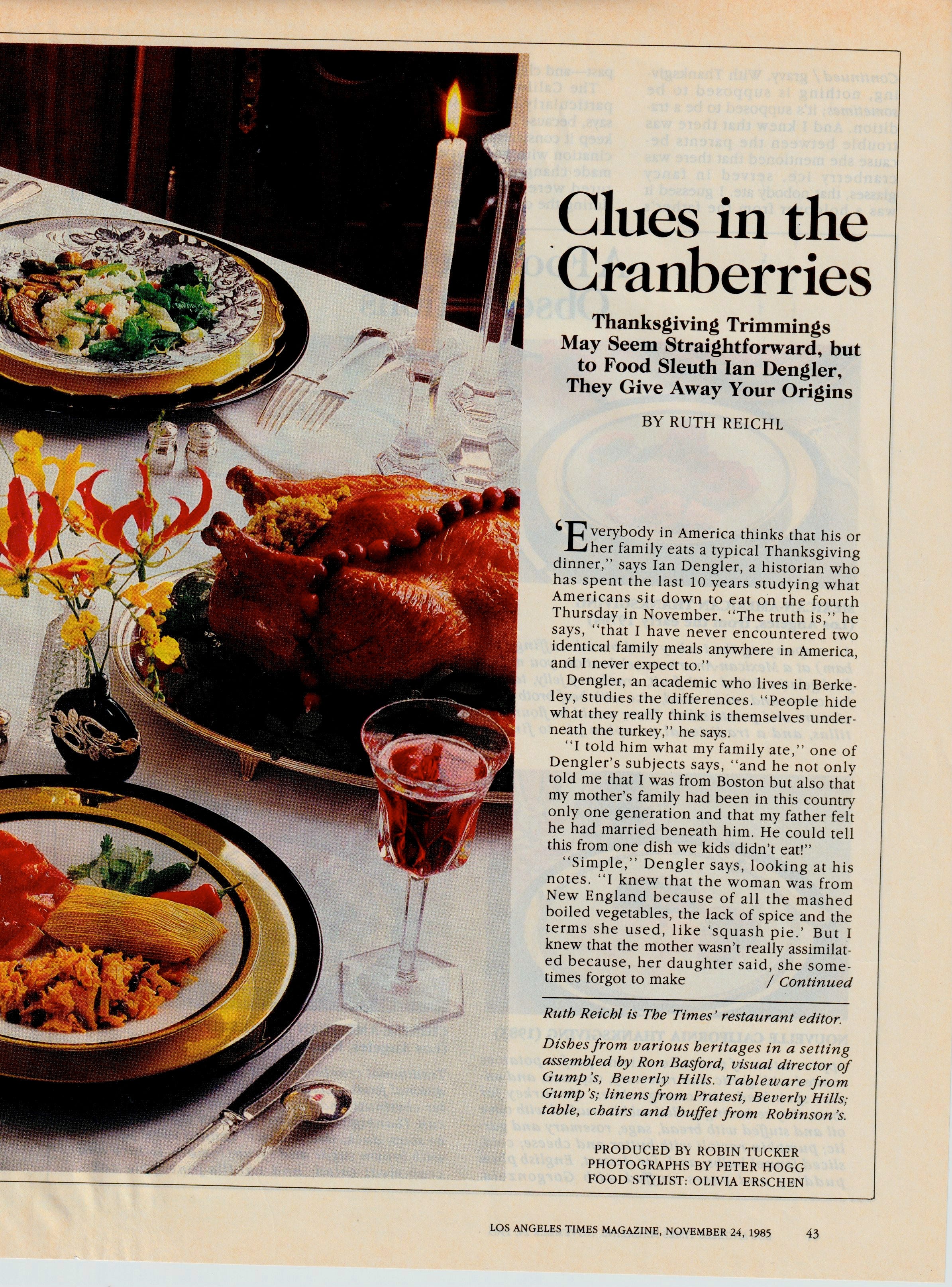
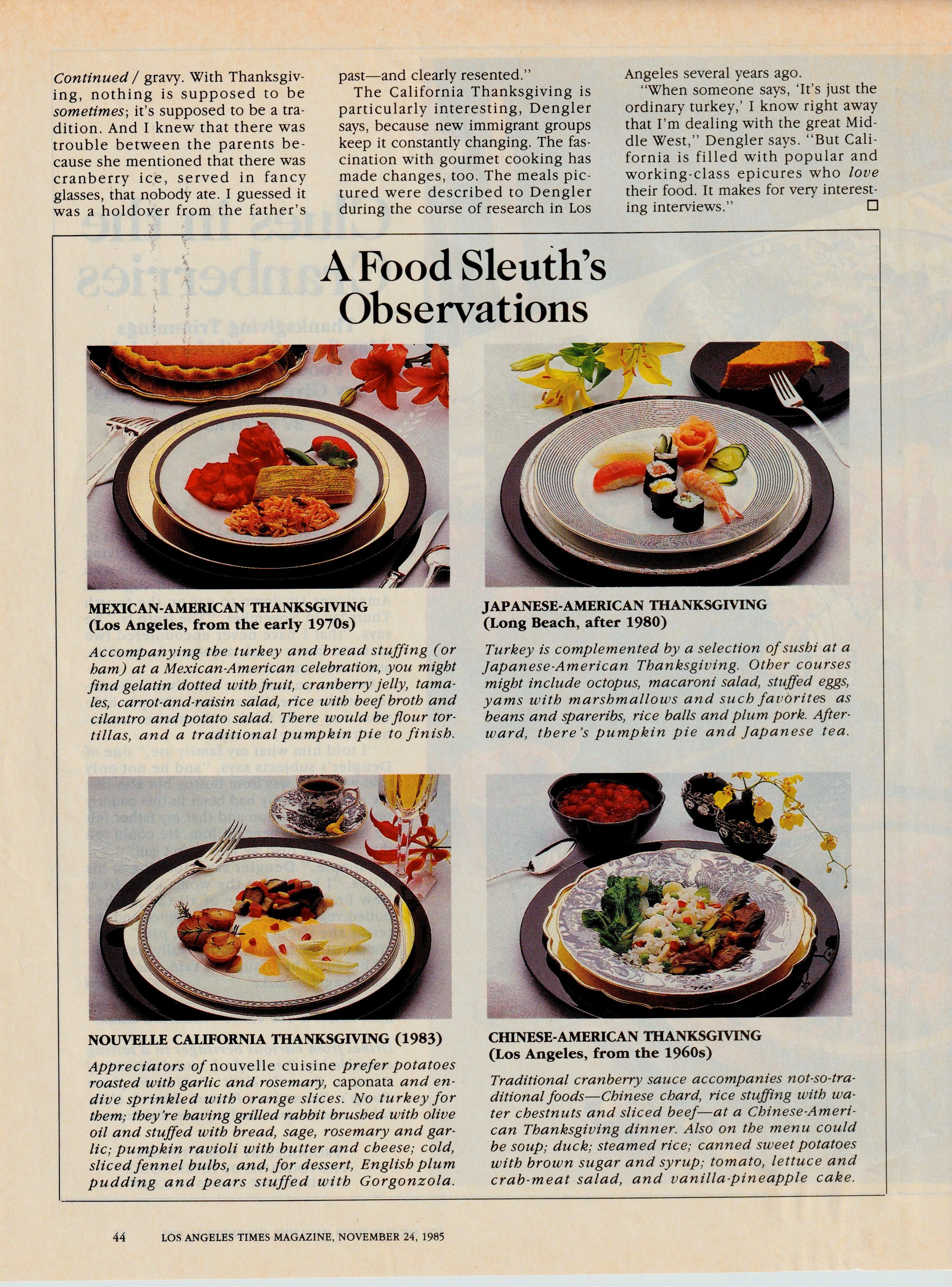

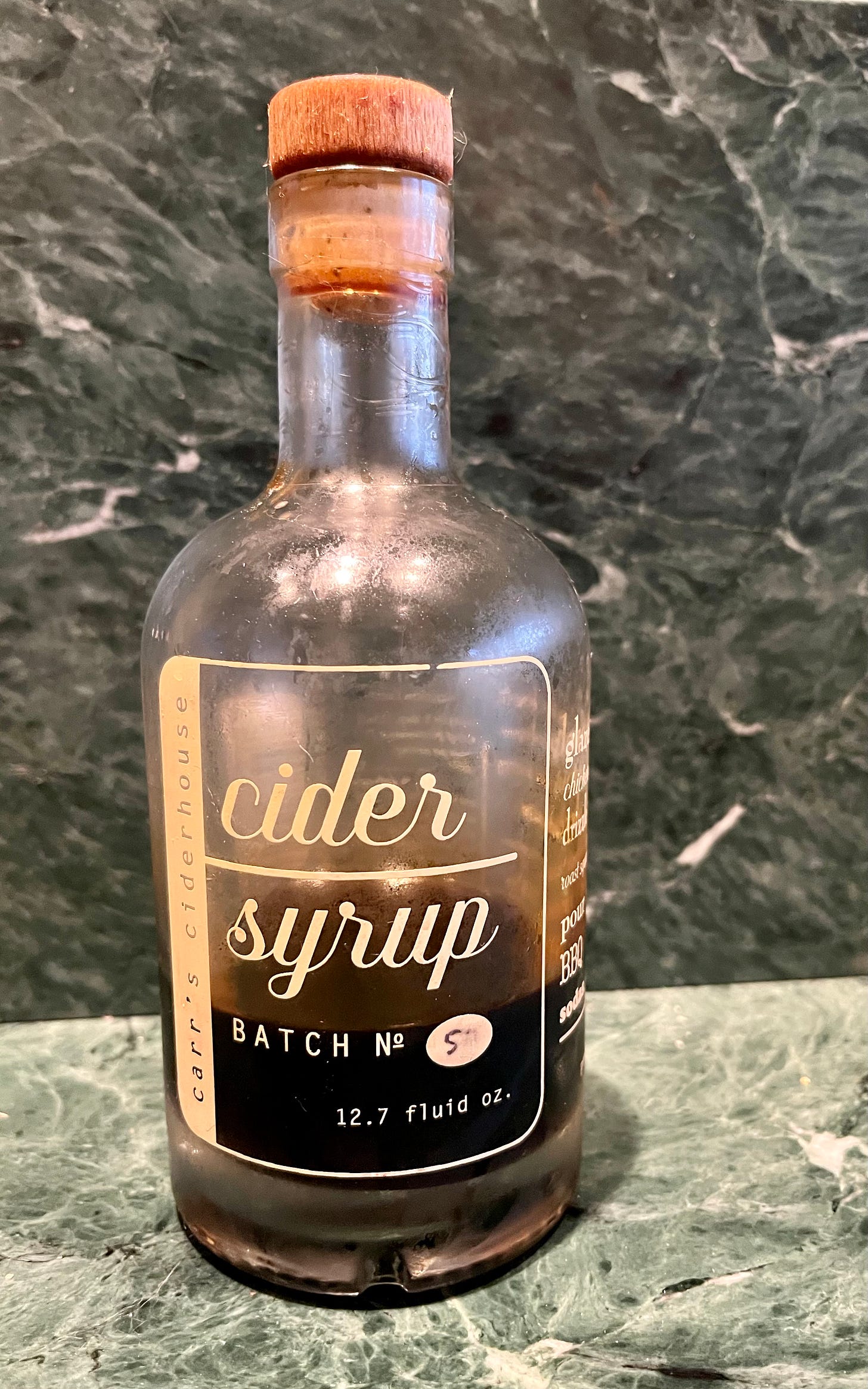


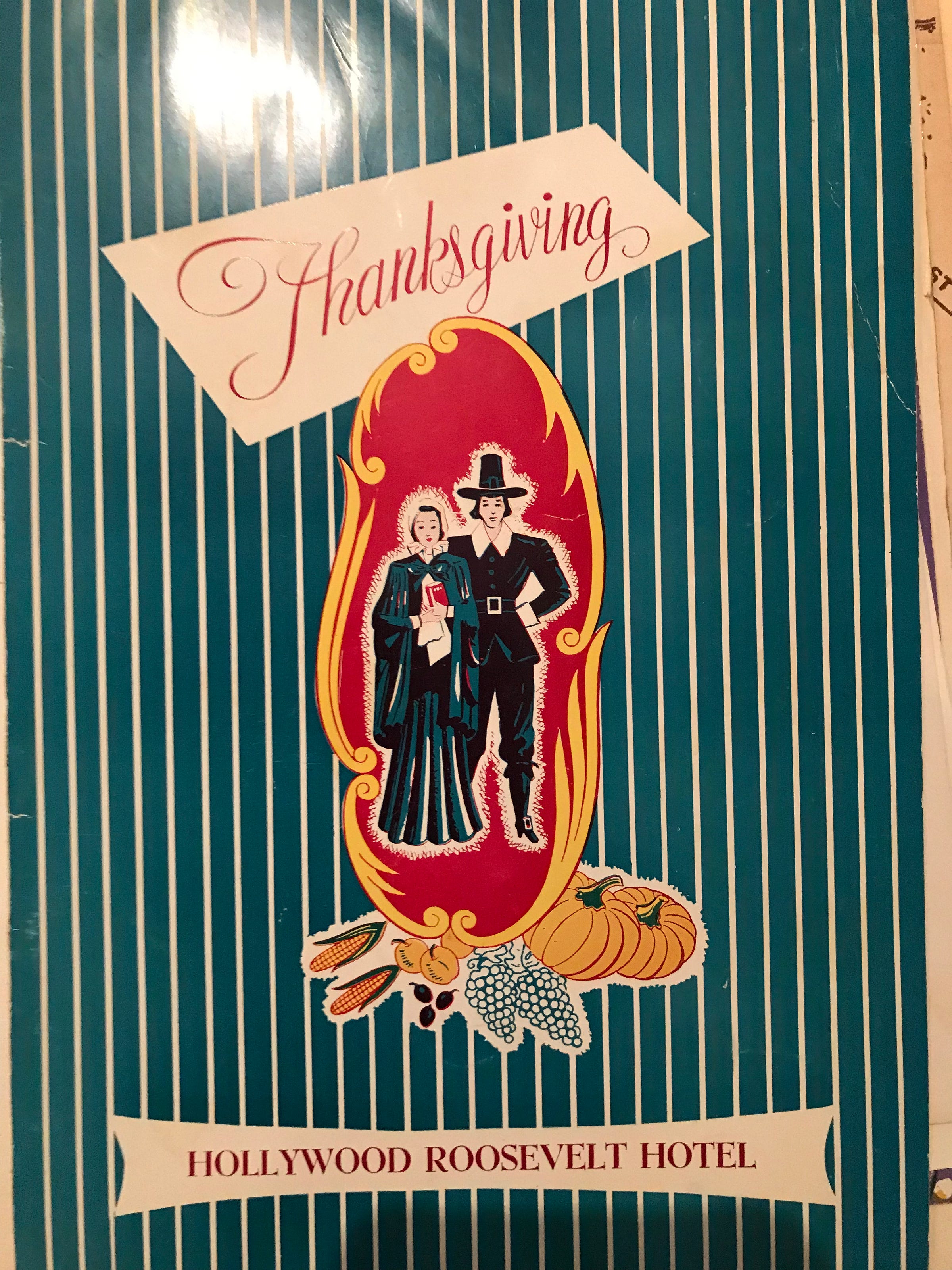
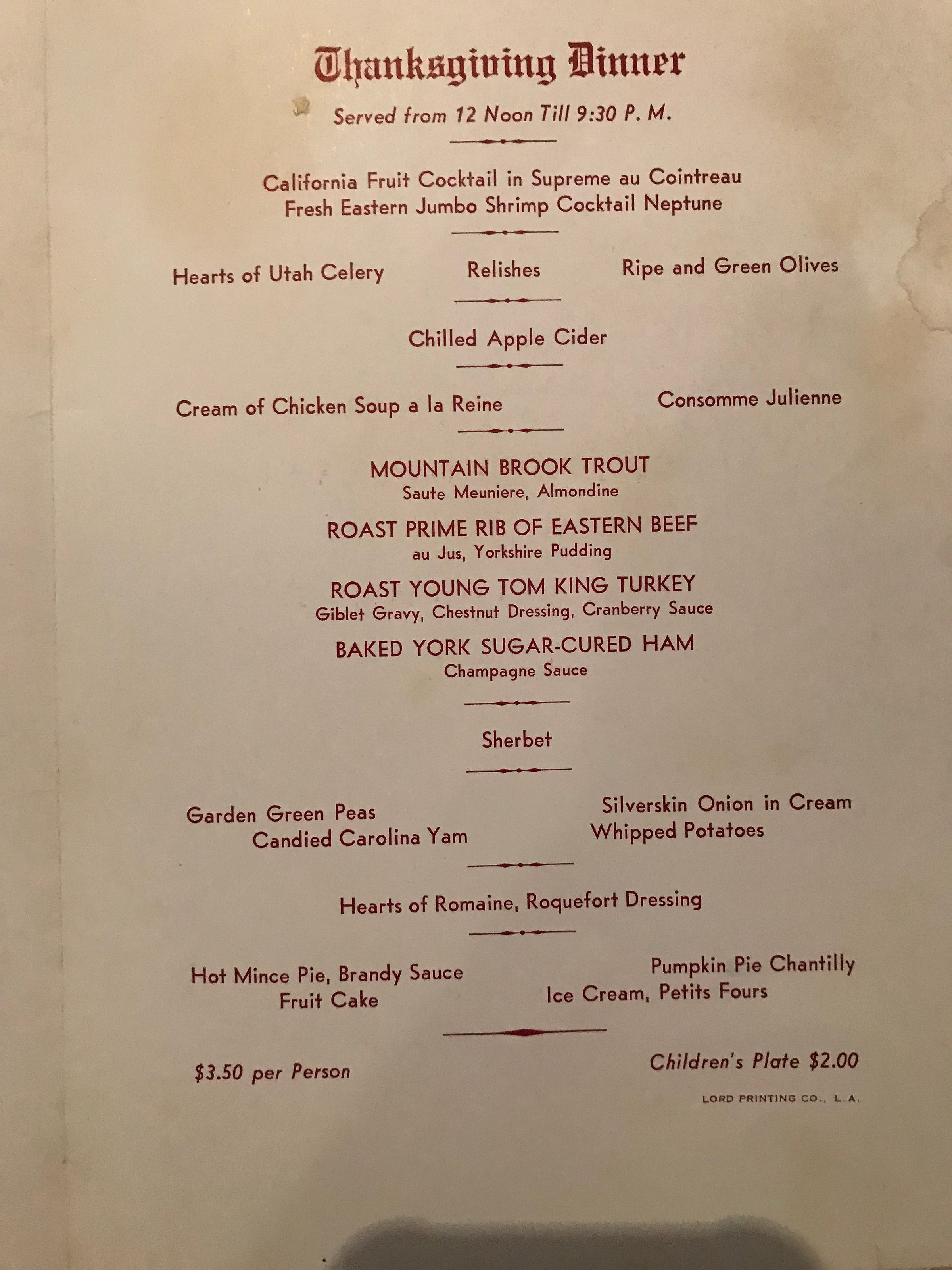

This was my fave time of the year. The annual delivery of the Thanksgiving Issue of Gourmet was always a big day in my house.
unusually interesting, thank you.